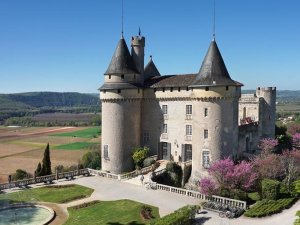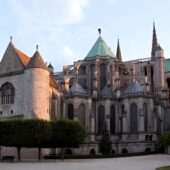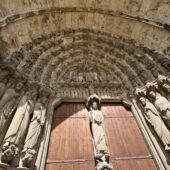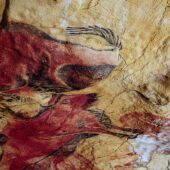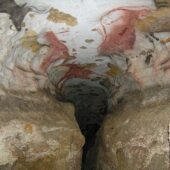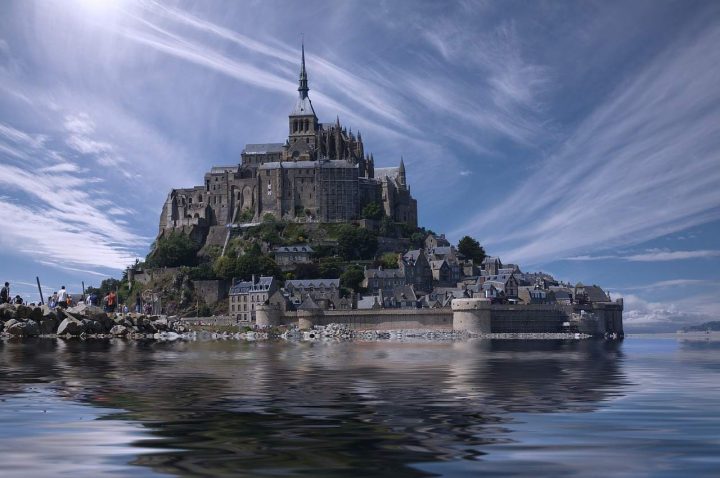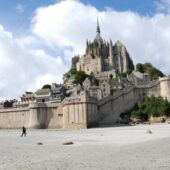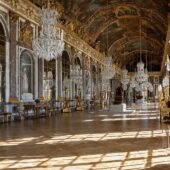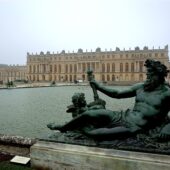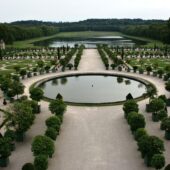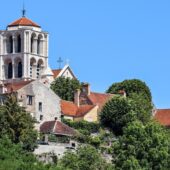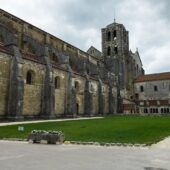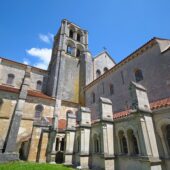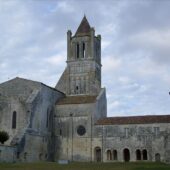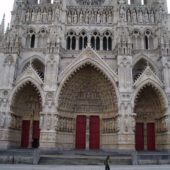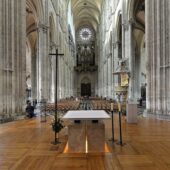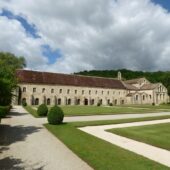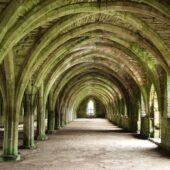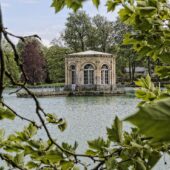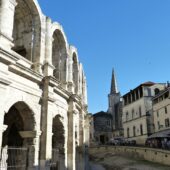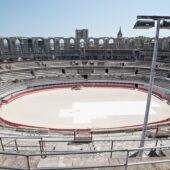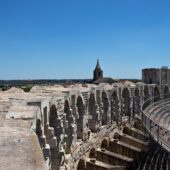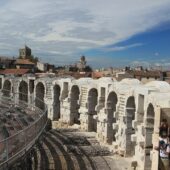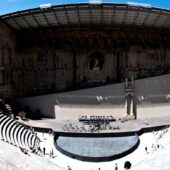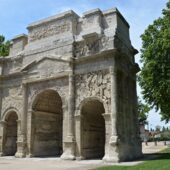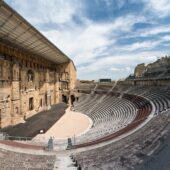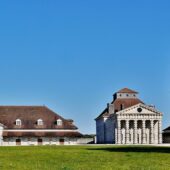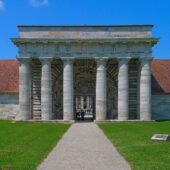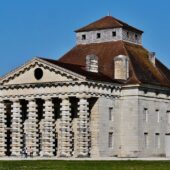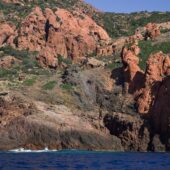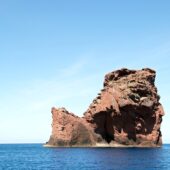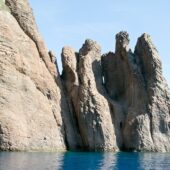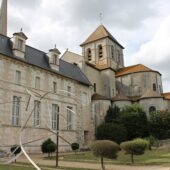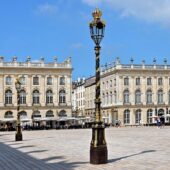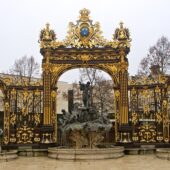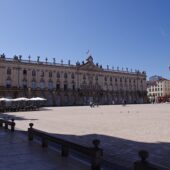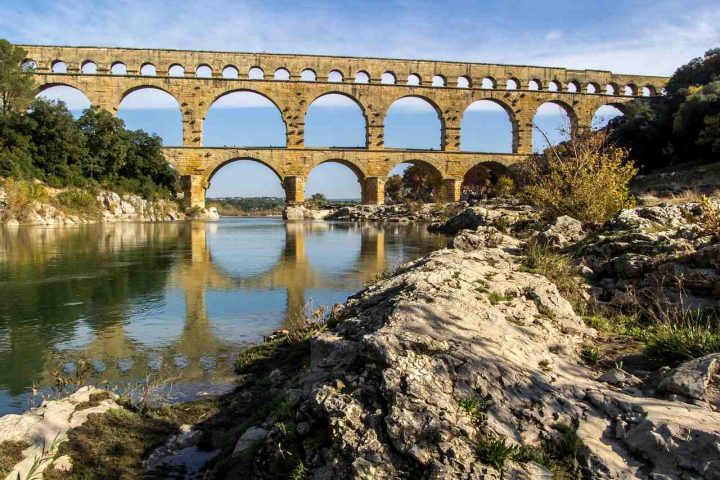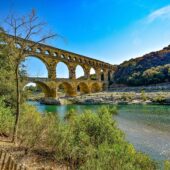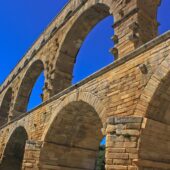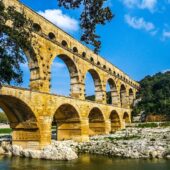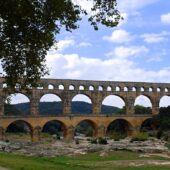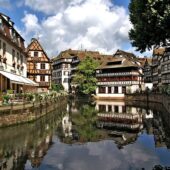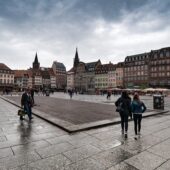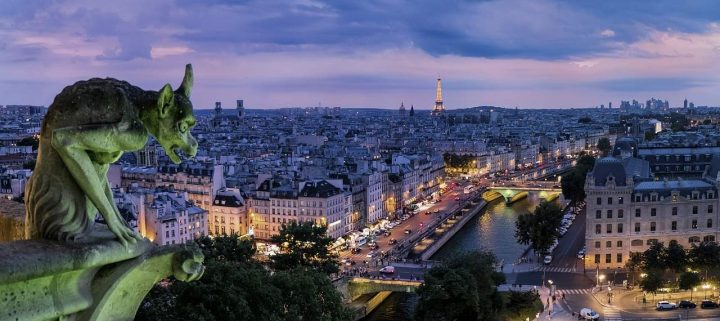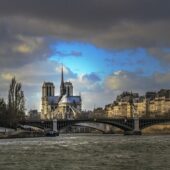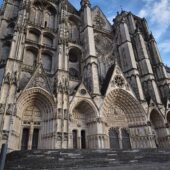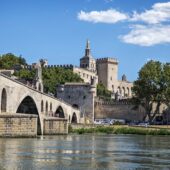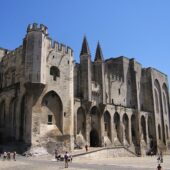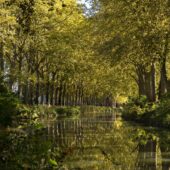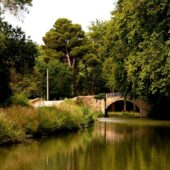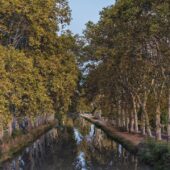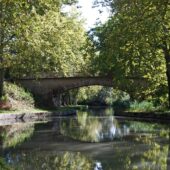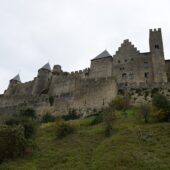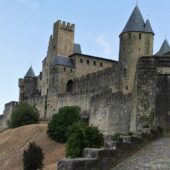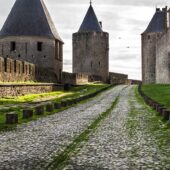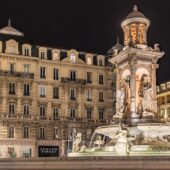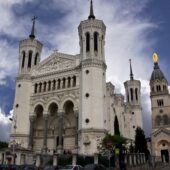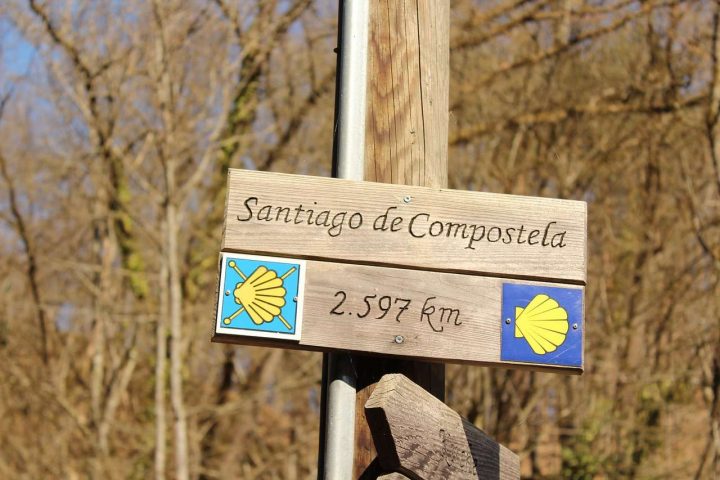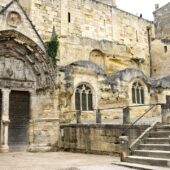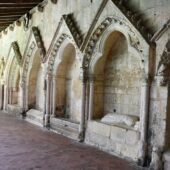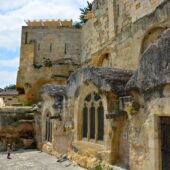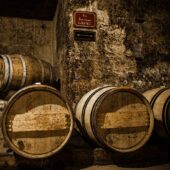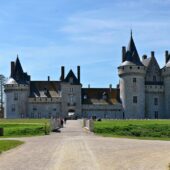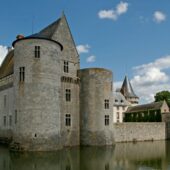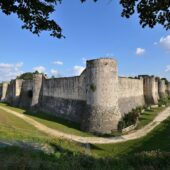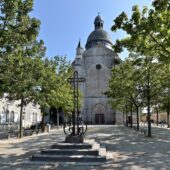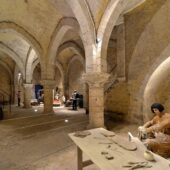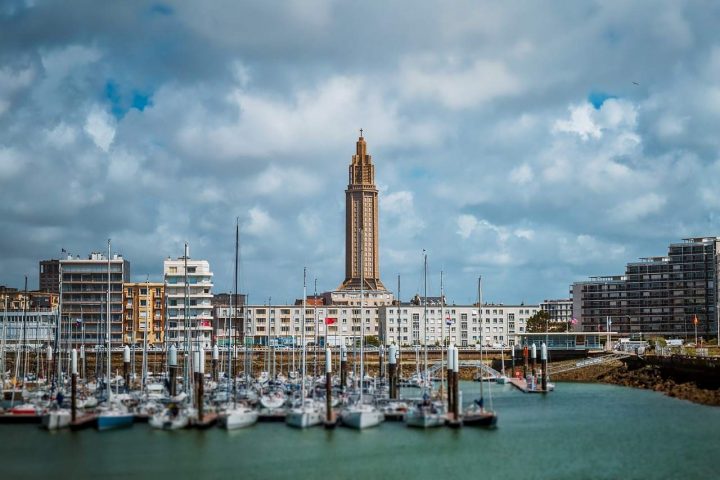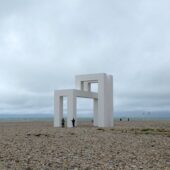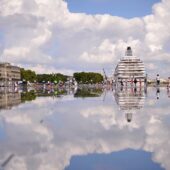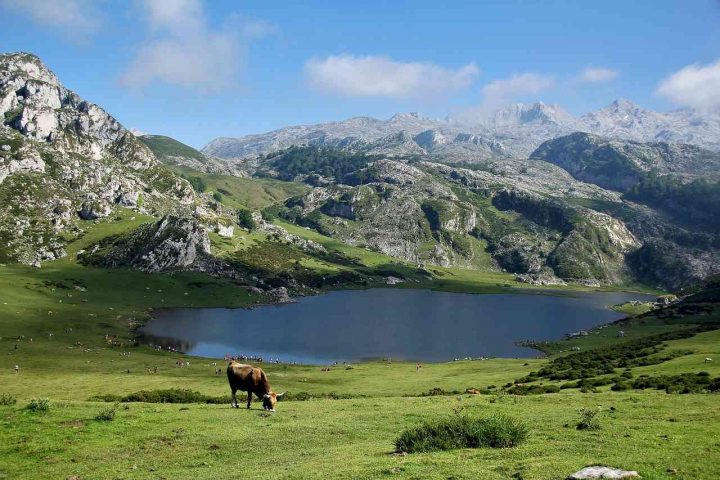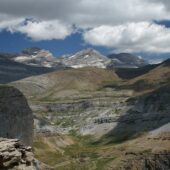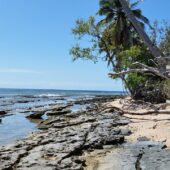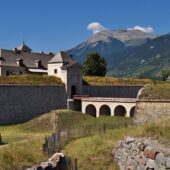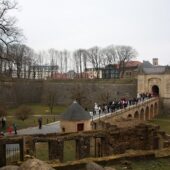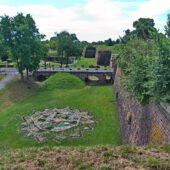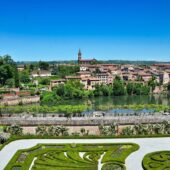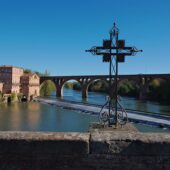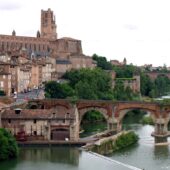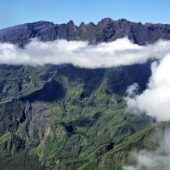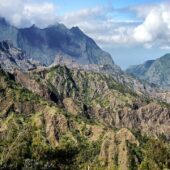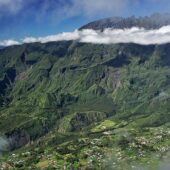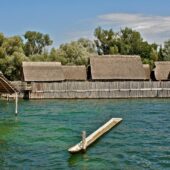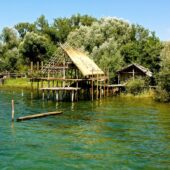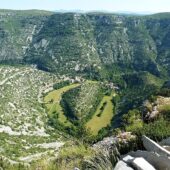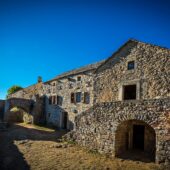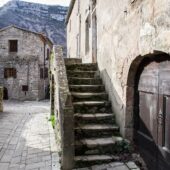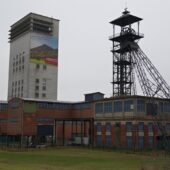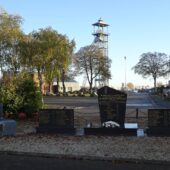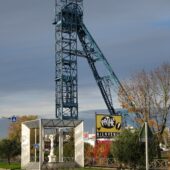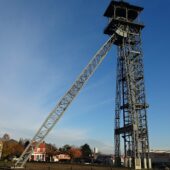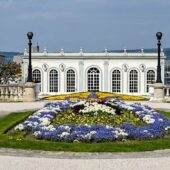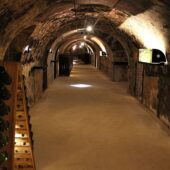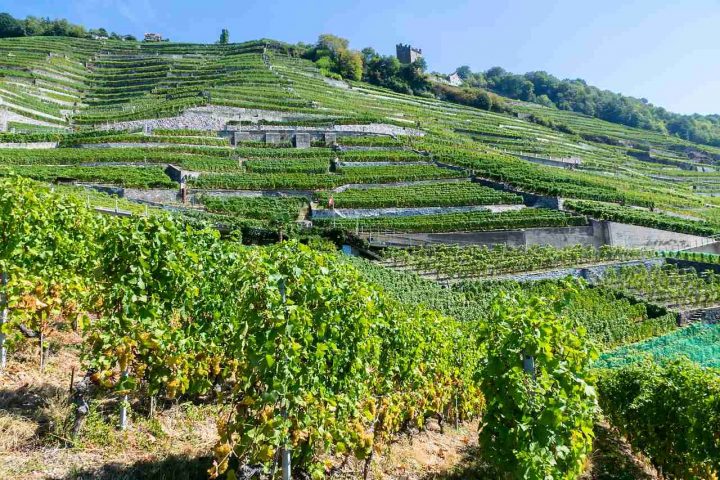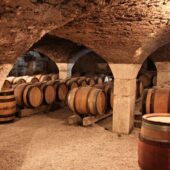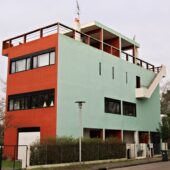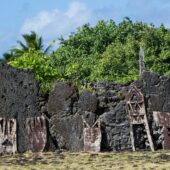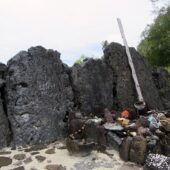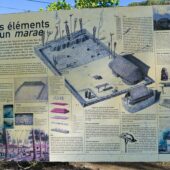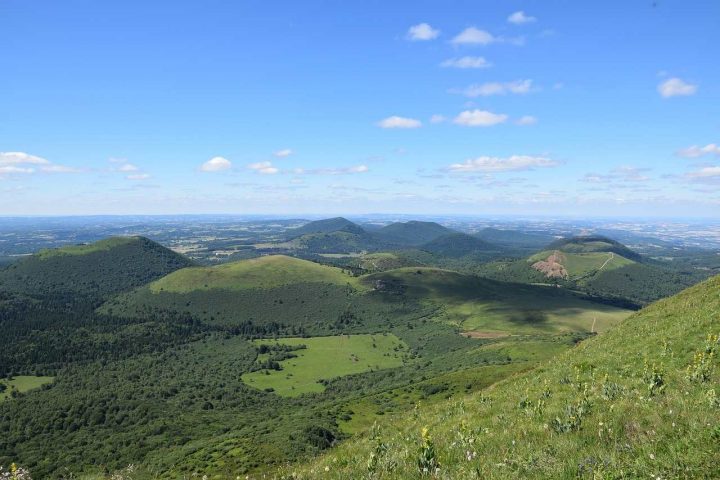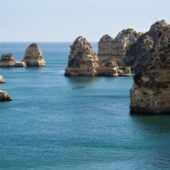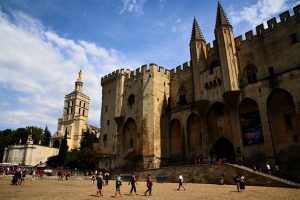UNESCO France – 45 Great UNESCO Sites in France (photos and map)
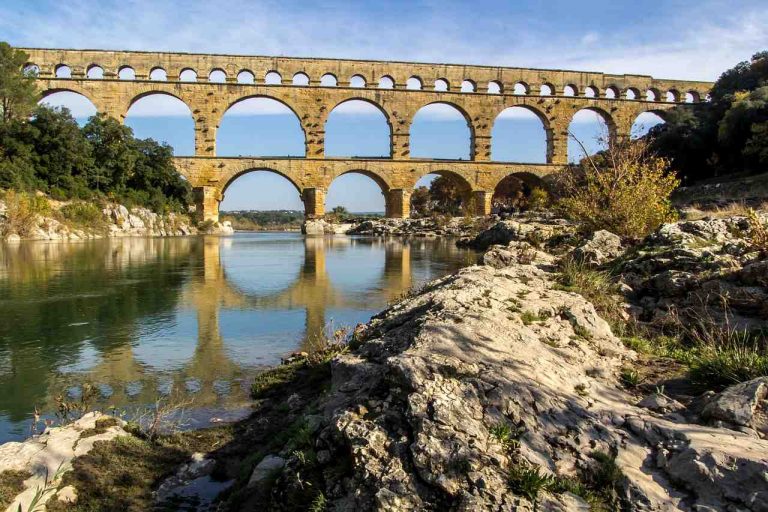
UNESCO France – 45 Great UNESCO Sites in France (photos and map)! France is a well-known tourist destination in Europe. Many visitors come to see the Eiffel Tower, swim on the Cote d’Azur, or taste some of the renowned French specialities. However, if they are limited to this list, they lose a lot.
Yachting in Balaton, Hungary - short 4k cinematic film
And don't forget to give us a like! :)
France is a country of castles, it would be a pitty not to stay in one!
There are lots of castles in France you will want to visit, but there are a few you can even spend a night at!Book a 13th-century room e.g. at Château de Mercuès and make your France expedition a special one!
Feel like a royal (regardless of your blood’s colour) at this 13th-century castle!
France is fourth in the world, just behind Italy, China and Spain, in terms of the number of UNESCO World Heritage Sites. After all, this country has 45 UNESCO properties and yet many of them are completely neglected by tourists. Finally, check the huge map at the bottom to check all the places that are a part of UNESCO in France! If you are looking for Castles in France check this article, we have listed 190 best castles to visit in France or read here about 50 most beautiful cities and towns to visit in France!
UNESCO in France
1. Chartres Cathedral
Chartres is a historic town in France, in the Center-Val de Loire, department of Eure-et-Loir. It lies on a small rocky hill on the left bank of the Eure River in a fertile lowland about 90 km southwest of Paris.
It is one of the most important and best-documented cathedrals in Europe. And also one of the largest Gothic cathedrals dedicated to the Virgin Mary from the 12th and 13th centuries.
Date of Inscription: 1979
http://whc.unesco.org/en/list/81
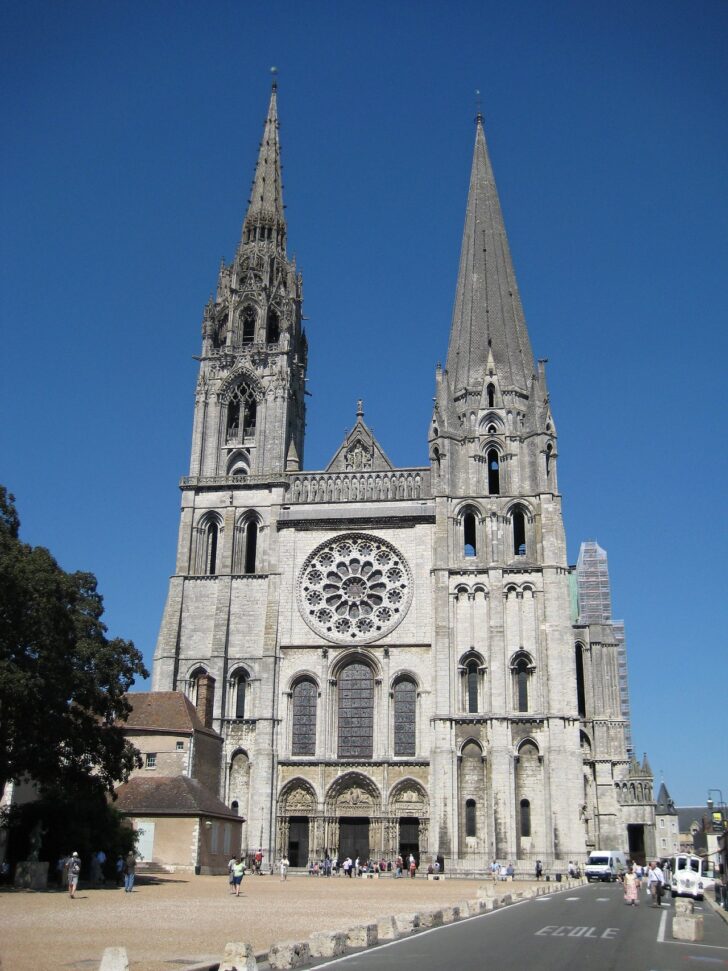
Chartres Cathedral, Unesco France by Allie_Caulfield / Flickr
- Chartres Cathedral, Unesco France 1 by Tony Hisgett / Flickr
- Chartres Cathedral, Unesco France 2 by dozemode / Pixabay
- Chartres Cathedral, Unesco France 3 by RENAULT_ANNE / Pixabay
- Chartres Cathedral, Unesco France 4 by Amaury Laporte / Flickr
2. Decorated Grottoes of the Vézère Valley
In the valley of the Vézère river in southern France, there are 147 prehistoric sites from the Palaeolithic period and 25 caves with paintings. The most famous of these is the Lascaux Cave, which was discovered in 1940 and which is of great importance for the study of the Stone Age art.
On its walls are displayed hunting scenes with up to 100 animals, which are remarkable in their details, colors and realistic design.
Date of Inscription: 1979
http://whc.unesco.org/en/list/85
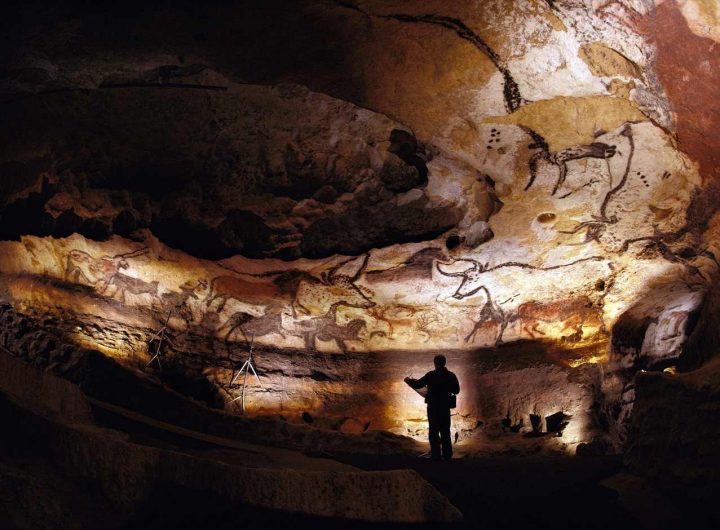
Decorated Grottoes of the Vézère Valley, Unesco France by Bayes Ahmed
- Decorated Grottoes of the Vézère Valley, Unesco France 1 by Xiquinho Silva / Flickr
- Decorated Grottoes of the Vézère Valley, Unesco France 2 by Francesco Bandarin / Wikimedia Commons
- Decorated Grottoes of the Vézère Valley, Unesco France 3 by Xiquinho Silva / Flickr
- Decorated Grottoes of the Vézère Valley, Unesco France 4 by Francesco Bandarin / Wikimedia Commons
3. Mont-Saint-Michel and its Bay
The mighty island of Mont Saint Michel is one of the most important attractions of western France. The imaginary boundary of Normandy and Brittany is a miracle, and one of the most iconic places in France.
The slender Gothic towers, together with the massive walls, rise dramatically from the sea. Despite the tourist crowds, you will still feel as if you have moved back to the Middle Ages.
Date of Inscription: 1979
http://whc.unesco.org/en/list/80
- Mont-Saint-Michel and its Bay, Unesco France 1 by Dylanleagh / Pixabay
- Mont-Saint-Michel and its Bay, Unesco France 2 by barskefranck / Pixabay
- Mont-Saint-Michel and its Bay, Unesco France 3 by 6845319 / Pixabay
- Mont-Saint-Michel and its Bay, Unesco France 4 by ykaiavu / Pixabay
4. Palace and Park of Versailles
Versailles is an architectural pearl of France! Versailles Castle, not far from the French capital of Paris, was built at the time of the supreme royal power, a symbol of absolutist monarchy and an example of classicist architecture.
Until the French Revolution of 1789, it was the seat of the royal court and the French government. Many palaces and castles in other countries were built with the aim to match such beauty, but they never achieved it.
Date of Inscription: 1979
http://whc.unesco.org/en/list/83
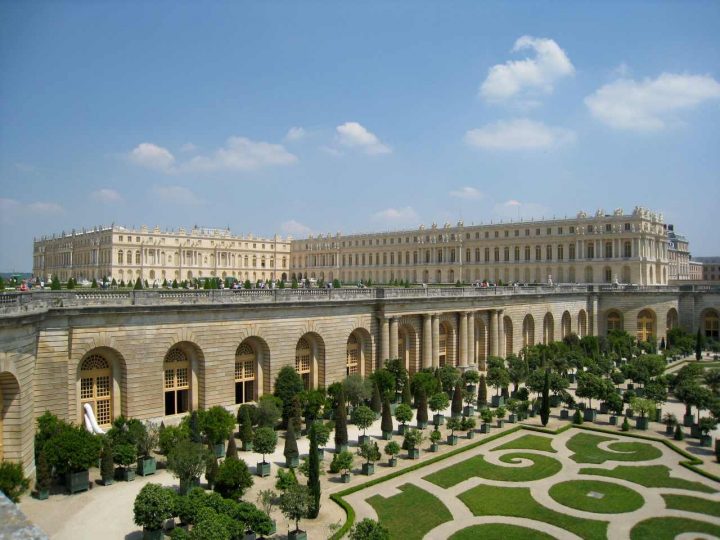
Palace and Park of Versailles, Unesco France by Justin A. Wilcox
- Palace and Park of Versailles, Unesco France 1 by Jorge Láscar / Flickr
- Palace and Park of Versailles, Unesco France 2 by Nathan Hughes Hamilton / Flickr
- Palace and Park of Versailles, Unesco France 3 by Travis Wise / Flickr
- Palace and Park of Versailles, Unesco France 4 by 139904 / Pixabay
5. Vézelay, Church and Hill
Benedictine Abbey in Vézelay was founded back in the 9th century. After receiving the relics of St. Mary Magdalene, it became an important pilgrimage site.
In 1190, King Philip II and Richard the Lionheart met here to leave for the Third Crusade together. The 12th-century Sainte-Marie-Madeleine Basilica is a masterpiece of Burgundy Romanesque art and architecture.
Date of Inscription: 1979
http://whc.unesco.org/en/list/84
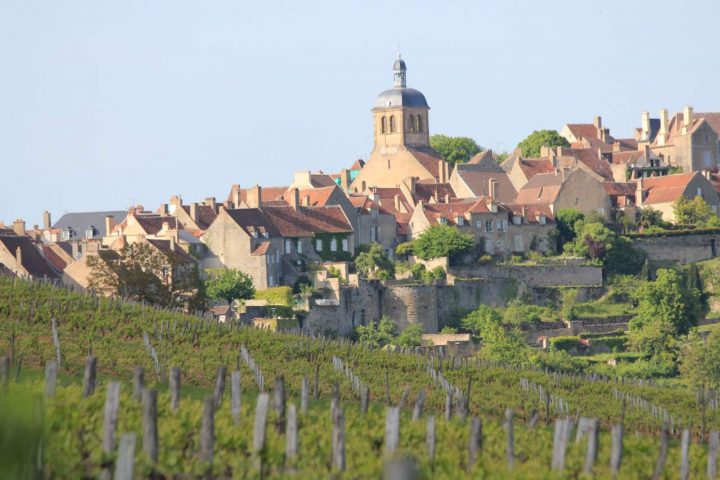
Vézelay, Church and Hill, Unesco France by Julien Carnot
- Vézelay, Church and Hill, Unesco France 1 by Ben_Kerckx / Pixabay
- Vézelay, Church and Hill, Unesco France 2 by Anna & Michal / Flickr
- Vézelay, Church and Hill, Unesco France 3 by Random_fotos / Flickr
- Vézelay, Church and Hill, Unesco France 4 by Cobber17 / Wikimedia Commons
6. Amiens Cathedral
Amiens is the city of Jules Verne. In northern France, in the valley of the river Somme lies the town of Amiens, which has suffered a lot in the past.
In 1918 it was very intensively bombed during the war and in 1940 the artillery leveled most of its ancient center. For this reason, you will find one war memorial after another, but Amiens offers much more to see. The huge cathédrale de Notre-Dame miraculously survived the destruction and bombing of the city during the First and Second World War, which today is the main reason to visit Amiens.
Date of Inscription: 1981
http://whc.unesco.org/en/list/162
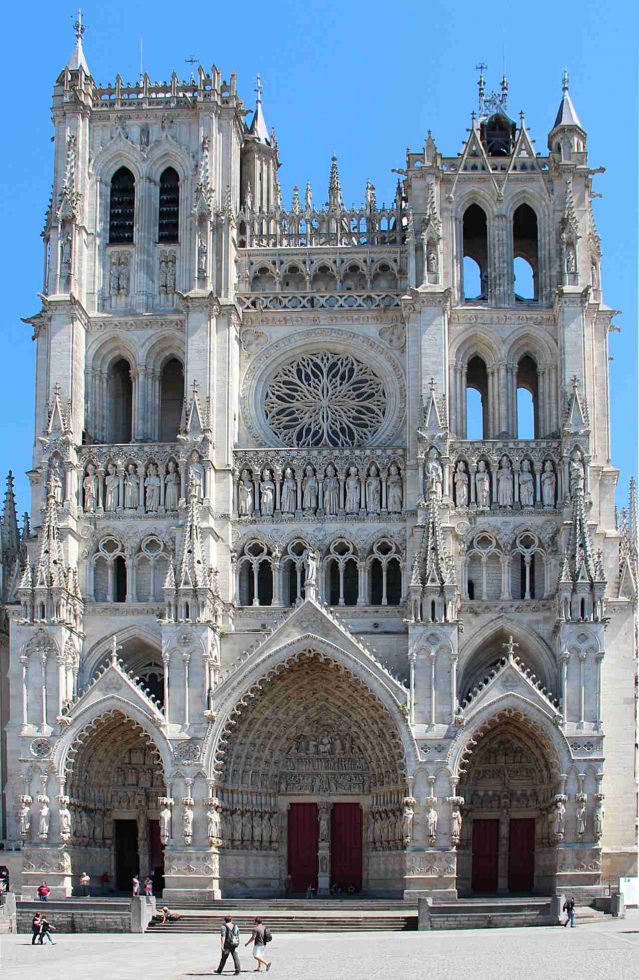
Amiens Cathedral, Unesco France by Jean-Pol GRANDMONT [CC BY 3.0], via Wikimedia Commons
- Amiens Cathedral, Unesco France 1 by Amanda Slater / Flickr
- Amiens Cathedral, Unesco France 2 by Zotx / Pixabay
- Amiens Cathedral, Unesco France 3 by WikimediaImages / Pixabay
- Amiens Cathedral, Unesco France 4 by Patrick / Flickr
7. Cistercian Abbey of Fontenay
Center of France is home to the oldest surviving Cistercian monastery in the country – Abbaye de Fontenay. It was founded in 1118 by Saint Bernard of Clairvaux and named after the local spring flowing through the wooded valley.
At the beginning of the 20th century, the whole monastery complex was reconstructed to its original medieval appearance. The monastery is very popular with tourists, UNESCO World Heritage Site and a beautiful monument of the Middle Ages.
Date of Inscription: 1981
http://whc.unesco.org/en/list/165
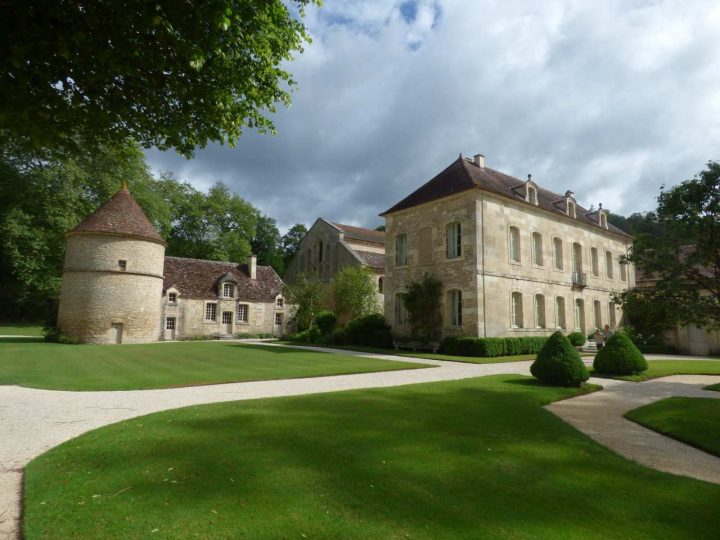
Cistercian Abbey of Fontenay, Unesco France by Elliott Brown
- Cistercian Abbey of Fontenay, Unesco France 1 by Elliott Brown / Flickr
- Cistercian Abbey of Fontenay, Unesco France 2 by WolfBlur / Pixabay
- Cistercian Abbey of Fontenay, Unesco France 3 by Elliott Brown / Flickr
- Cistercian Abbey of Fontenay, Unesco France 4 by Elliott Brown / Flickr
8. Palace and Park of Fontainebleau
About 60 kilometers south of Paris is the town of Fontainebleau, which is famous not only for its vast forests, which are the weekend destination of Parisians, but also for the charming Chateau de Fontainebleau, one of the largest castles in France.
The chateau used to be the seat of kings, today it is admired by tourists. Chateau de Fontainebleau was built in the 10th century in the middle of a local woodland originally as a hunting lodge, now it is included in the UNESCO World Heritage List.
Date of Inscription: 1981
http://whc.unesco.org/en/list/160
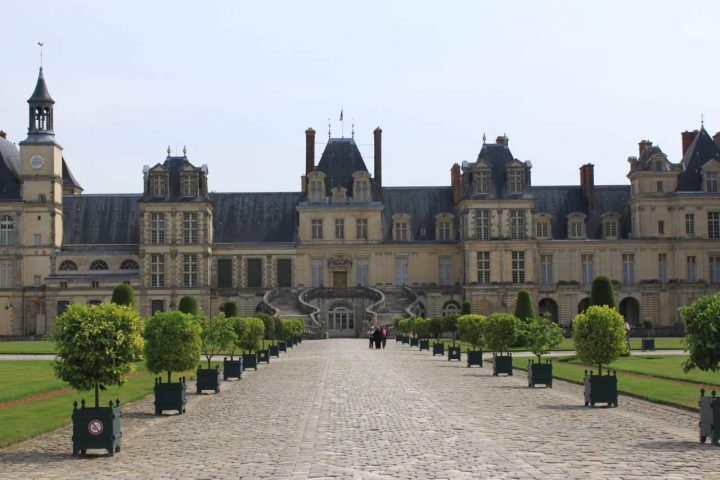
Palace and Park of Fontainebleau, Unesco France by keith.bellvay
- Palace and Park of Fontainebleau, Unesco France 1 by publimode / Pixabay
- Palace and Park of Fontainebleau, Unesco France 2 by publimode / Pixabay
- Palace and Park of Fontainebleau, Unesco France 3 by Rictor Norton & David Allen / Flickr
- Palace and Park of Fontainebleau, Unesco France 4 by Xiquinho Silva / Flickr
9. Roman and Romanesque Monuments of Arles
If you thought that the largest city in France was Paris, we might disappoint you – the area of Arles is seven times larger! This Provencal city situated in the south of France includes an almost uninhabited area of wild marshes with a natural park, Camargue. The city has a rich history and its monuments are UNESCO sights.
The city is spread around the Roman amphitheatre, the Roman Baths of Constantine and the Roman Theater.
Date of Inscription: 1981
http://whc.unesco.org/en/list/164
- Roman and Romanesque Monuments of Arles, Unesco France 1 by falco / Pixabay
- Roman and Romanesque Monuments of Arles, Unesco France 2 by Skitterphoto / Pixabay
- Roman and Romanesque Monuments of Arles, Unesco France 3 by comuirgheasa / Pixabay
- Roman and Romanesque Monuments of Arles, Unesco France 4 by Sloopng / Pixabay
10. Roman Theatre and its Surroundings and the „Triumphal Arch“ of Orange
Would you like to see the most beautiful theatre in France? Visit Orange! About 20 kilometres from Avignon, in the south of France, there is the old town of Orange, which has one of the most important Roman monuments in the country.
It boasts an ancient forum, a temple and a theatre. Thanks to these buildings, it was inscribed on the UNESCO World Heritage List in 1981.
Date of Inscription: 1981
http://whc.unesco.org/en/list/163
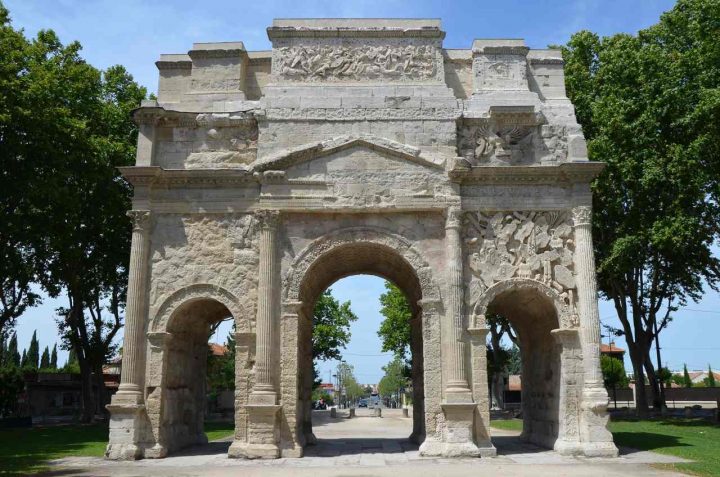
Triumphal Arch of Orange, Unesco France by Carole Raddato
- Roman Theatre and its Surroundings and the „Triumphal Arch“ of Orange, Unesco France 1 by M M / Flickr
- Roman Theatre and its Surroundings and the „Triumphal Arch“ of Orange, Unesco France 2 by Carole Raddato / Flickr
- Roman Theatre and its Surroundings and the „Triumphal Arch“ of Orange, Unesco France 3 by Carole Raddato / Flickr
- Roman Theatre and its Surroundings and the „Triumphal Arch“ of Orange, Unesco France 4 by Benh LIEU SONG / Flickr
11. Royal Saltworks of Arc-et-Senans
Industrial monument. The Royal saltworks in Arc-et-Senans began to be built in 1775 under the rule of Louis XVI. It was designed by Claue Nicolas Ledoux, who had it built in the middle of the woods in which there was enough wood which was important to make salt.
Some parts of the factory are still functional, while it was working until 1962.
Date of Inscription: 1982
http://whc.unesco.org/en/list/203
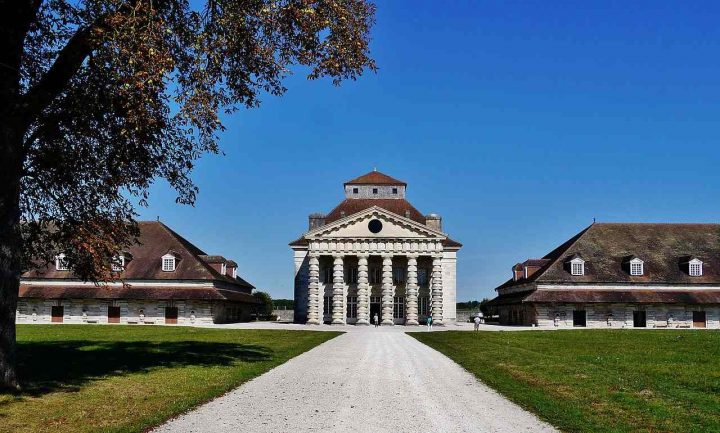
Royal Saltworks of Arc-et-Senans, Unesco France by Zairon [CC BY-SA 4.0], via Wikimedia Commons
- Royal Saltworks of Arc-et-Senans, Unesco France 1 by Zairon / Wikimedia Commons
- Royal Saltworks of Arc-et-Senans, Unesco France 2 by Rolf Süssbrich / Wikimedia Commons
- Royal Saltworks of Arc-et-Senans, Unesco France 3 by Rolf Süssbrich / Wikimedia Commons
- Royal Saltworks of Arc-et-Senans, Unesco France 4 by Zairon / Wikimedia Commons
12. Gulf of Porto: Calanche of Piana, Gulf of Girolata, Scandola Reserve
The rarest parts of the island of Corsica can be found in the west. They form a natural park known as Scandola Nature Reserve. The strange shapes of the rocks rise directly from the sea. There is a dreamy atmosphere in any weather, with the impression of theatrical scenes built for ancient passionate dramas.
Scandola is almost untouched by man. It is mainly because it is inaccessible. The jagged rocks form a natural protection for its inhabitants and only some parts of the reservation can be visited after a long walk.
Date of Inscription: 1983
http://whc.unesco.org/en/list/258
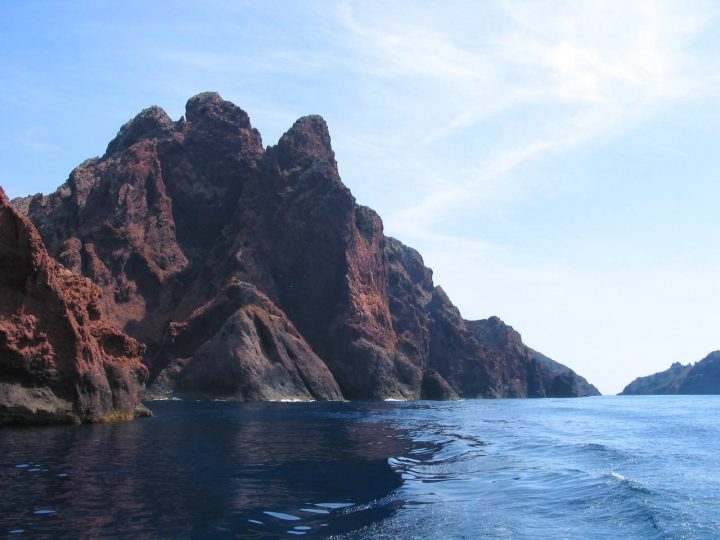
Cape Girolata, Cape Porto, Scandola Nature Reserve and the Piana Calanches in Corsica, Unesco France by Larry Koester
- Gulf of Porto, Calanche of Piana, Gulf of Girolata, Scandola Reserve, Unesco France 1 by jackmac34 / Pixabay
- Gulf of Porto, Calanche of Piana, Gulf of Girolata, Scandola Reserve, Unesco France 2 by Paul Asman and Jill Lenoble / Flickr
- Gulf of Porto, Calanche of Piana, Gulf of Girolata, Scandola Reserve, Unesco France 3 by Paul Asman and Jill Lenoble / Flickr
- Gulf of Porto, Calanche of Piana, Gulf of Girolata, Scandola Reserve, Unesco France 4 by Paul Asman and Jill Lenoble / Flickr
13. Abbey Church of Saint-Savin sur Gartempe
The Benedictine Abbey of Saint-Savin-sur-Gartempe was founded in the 11th Century. It is built in Romanesque style.
In his church, there are extremely beautiful and well-preserved murals. They all depict biblical stories from the Old Testament.
Date of Inscription: 1983
http://whc.unesco.org/en/list/230

Church of Saint-Savin sur Gartempe, Unesco France by Daniel Jolivet
- Abbey church of Saint-Savin sur Gartempe, Unesco France 1 by Daniel Jolivet / Flickr
- Abbey church of Saint-Savin sur Gartempe, Unesco France 2 by Joaquín O.C. / Flickr
- Abbey church of Saint-Savin sur Gartempe, Unesco France 3 by Joaquín O.C. / Flickr
- Abbey church of Saint-Savin sur Gartempe, Unesco France 4 by Joaquín O.C. / Flickr
14. Place Stanislas, Place de la Carrière and Place d’Alliance in Nancy
The three-square design (Place Stanislas, Place de la Carriere and Place d’Alliance) is an example of both representative and functional architecture. Nancy is the pearl of Lorraine.
It is the city of King of Poland and Duke of Lorraine Stanislav I. In the 18th century he built one of the most beautiful cities in all of France, created a globally recognized centre of education.
Date of Inscription: 1983
http://whc.unesco.org/en/list/229
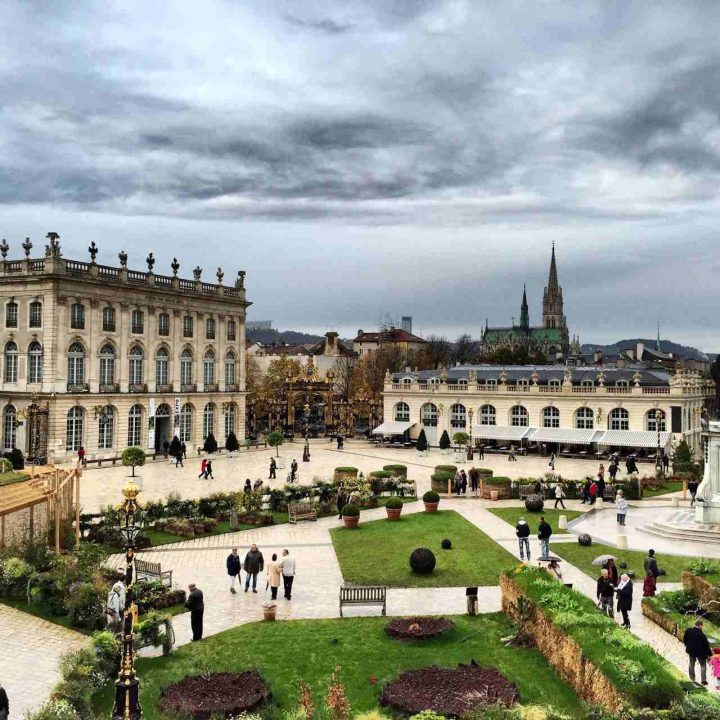
Place Stanislas, Place de la Carrière and Place d’Alliance in Nancy, Unesco France by Alexey Matveichev
- Place Stanislas, Place de la Carrière and Place d’Alliance in Nancy, Unesco France 1 by Rutger van der Maar / Flickr
- Place Stanislas, Place de la Carrière and Place d’Alliance in Nancy, Unesco France 2 by Patrick / Flickr
- Place Stanislas, Place de la Carrière and Place d’Alliance in Nancy, Unesco France 3 by Tony Bowden / Flickr
- Place Stanislas, Place de la Carrière and Place d’Alliance in Nancy, Unesco France 4 by Rutger van der Maar / Flickr
15. Pont du Gard Roman Aqueduct
The 275-meter-long Pont du Gard aqueduct, located near the southern French town of Nîmes, is considered a marvel of Roman construction technology. Ever since 19 BC, when it was built by Emperor Agrippa, it spans the valley of the Gard River.
It consists of three floors of arcades and has become one of the largest and most amazing preserved Roman buildings in the country.
Date of Inscription: 1985
http://whc.unesco.org/en/list/344
- Pont du Gard Roman Aqueduct, Unesco France 1 by user32212 / Pixabay
- Pont du Gard Roman Aqueduct, Unesco France 2 by Andy Hay / Flickr
- Pont du Gard Roman Aqueduct, Unesco France 3 by Ridoe / Pixabay
- Pont du Gard Roman Aqueduct, Unesco France 4 by Roland Turner / Flickr
16. Strasbourg: from Grande-île to Neustadt, a European urban scene
Strasbourg is the capital of Alsace, the largest French river port and also the sixth-largest city in the country. It is situated near the German border on the River Ill, near the left bank of the Rhine and has about 280,000 inhabitants.
Since 1988 the historic centre of this beautiful city has been a UNESCO World Heritage Site.
Date of Inscription: 1988
http://whc.unesco.org/en/list/495

Strasbourg, from Grande-île to Neustadt, a European urban scene, Unesco France by Randi Hausken
- Strasbourg, from Grande-île to Neustadt, a European urban scene, Unesco France 1 by monikawl999 / Pixabay
- Strasbourg, from Grande-île to Neustadt, a European urban scene, Unesco France 2 by Dusan_Cvetanovic / Pixabay
- Strasbourg, from Grande-île to Neustadt, a European urban scene, Unesco France 3 by SLPix / Pixabay
- Strasbourg, from Grande-île to Neustadt, a European urban scene, Unesco France 4 by Mathias GUILLAUME / Flickr
17. Cathedral of Notre-Dame, Former Abbey of Saint-Remi and Palace of Tau, Reims
The most famous city in the French region of Champagne – Ardenne is undoubtedly Reims, located about 150 km northeast of Paris. The city is of great importance for the whole of France, as it was here that all 26 monarchs were crowned – starting with Philip II in 1180 and ending with Charles X in 1825.
It boasts an interesting history, rich culture and lots of beautiful monuments, so it is extremely attractive from a tourist point of view.
Date of Inscription: 1991
http://whc.unesco.org/en/list/601
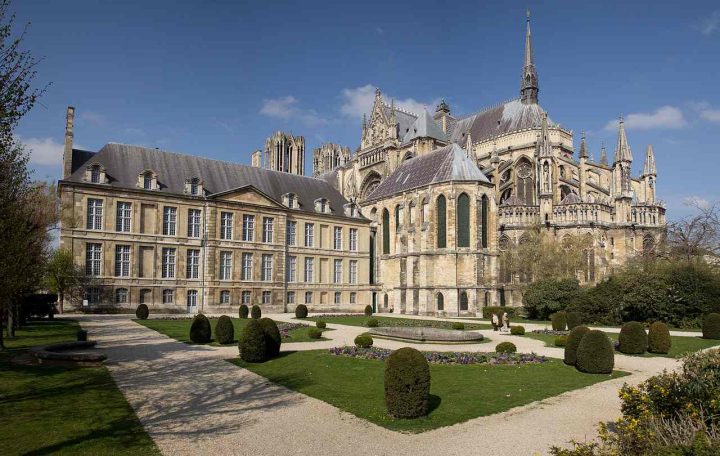
Cathedral of Notre-Dame, Former Abbey of Saint-Remi and Palace of Tau, Reims, Unesco France by Johan Bakker [CC BY-SA 3.0], via Wikimedia Commons
- Cathedral of Notre-Dame, Former Abbey of Saint-Remi and Palace of Tau, Reims, Unesco France 1 by Cristina Valencia / Flickr
- Cathedral of Notre-Dame, Former Abbey of Saint-Remi and Palace of Tau, Reims, Unesco France 2 by Pedro Szekely / Flickr
- Cathedral of Notre-Dame, Former Abbey of Saint-Remi and Palace of Tau, Reims, Unesco France 3 by Zachi Evenor / Flickr
- Cathedral of Notre-Dame, Former Abbey of Saint-Remi and Palace of Tau, Reims, Unesco France 4 by Dennis Jarvis / Flickr
18. Paris, Banks of the Seine
Paris boasts many historic sites that are admired by millions of visitors each year. Nobody will miss world-famous sights such as Notre Dame Cathedral, Eiffel Tower, Louvre, Ile de la Cité, Sacre Coer, etc.
Sights lovers should definitely take enough time to explore them. Paris, originally a small island on the Seine, is located almost in the very centre of the country.
Date of Inscription: 1991
http://whc.unesco.org/en/list/600
- Paris, Banks of the Seine, Unesco France 1 by jrico144 / Pixabay
- Paris, Banks of the Seine, Unesco France 2 by jiangli129 / Pixabay
- Paris, Banks of the Seine, Unesco France 3 by KocBar / Pixabay
- Paris, Banks of the Seine, Unesco France 4 by bidyutd / Pixabay
19. Bourges Cathedral
Bourges will surely enchant you with its purity and rich floral decorations that are truly impressive. If you are looking for a quiet place Bourges with its summer restaurants and a cheerful atmosphere can be handy. The Gothic Bourges Cathedral is a top sight here!
Date of Inscription: 1992
http://whc.unesco.org/en/list/635
- Bourges Cathedral, Unesco France 1 by Angel de los Rios / Flickr
- Bourges Cathedral, Unesco France 2 by Moto Itinerari / Flickr
- Bourges Cathedral, Unesco France 3 by Patrick / Flickr
- Bourges Cathedral, Unesco France 4 by Angel de los Rios / Flickr
20. Historic Centre of Avignon
French Provence hides a lot of beautiful places – it is a region of endless vineyards, lavender fields, limestone mountains, picturesque villages and beautiful ancient cities.
One of them is Avignon, Vatican of France. It lies on the banks of the Rhone River and is surrounded by the city walls. During your visit, you can admire not only the famous bridge but also many other sights.
Date of Inscription: 1995
http://whc.unesco.org/en/list/228
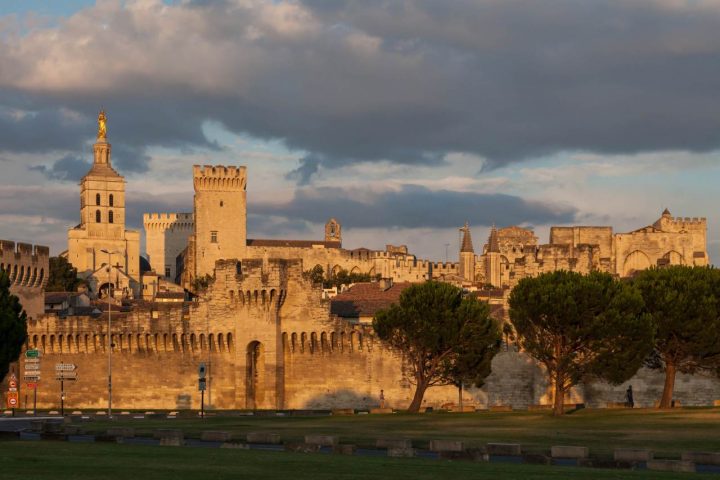
Historic Centre of Avignon, Unesco France by David Brossard
- Historic Centre of Avignon, Unesco France 1 by gillag / Pixabay
- Historic Centre of Avignon, Unesco France 2 by Hans / Pixabay
- Historic Centre of Avignon, Unesco France 3 by 12019 / Pixabay
- Historic Centre of Avignon, Unesco France 4 by MarcelDominic / Pixabay
21. Canal du Midi
The canal of two seas is the work of Baron Riquet (1604-1680) and its construction took 14 years (1666 – 1681). It is more than 300 years old technical waterworks connecting the Atlantic (Bordeaux) with the Mediterranean Sea (Sete).
The whole work is 593 kilometers long and is lined with bushy plane trees. The Canal du Midi was inscribed on the UNESCO World Heritage List in 1996.
Date of Inscription: 1996
https://whc.unesco.org/en/list/770
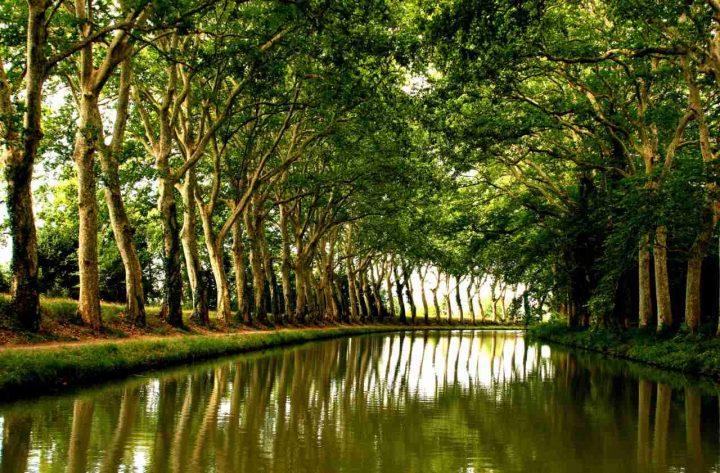
Canal du Midi, Unesco France by Thomas Claveirole
- Canal du Midi, Unesco France 1 by Ludovic Lubeigt / Flickr
- Canal du Midi, Unesco France 2 by Thomas Claveirole / Flickr
- Canal du Midi, Unesco France 3 by Christian Ferrer / Flickr
- Canal du Midi, Unesco France 4 by Fran Babcock / Flickr
22. Historic Fortified City of Carcassonne
The ancient castle of Carcassonne rises powerfully over France. The castle experienced its greatest boom when Rome settled there. The impregnable fortress has protected its inhabitants for centuries and has made it clear from a distance that it is one of the most sophisticated barricades.
The medieval city lies in the south of France and is one of the best-preserved fortress cities in Europe. Since 1997, this place has been rightly included in the UNESCO World Heritage List.
Date of Inscription: 1997
http://whc.unesco.org/en/list/345
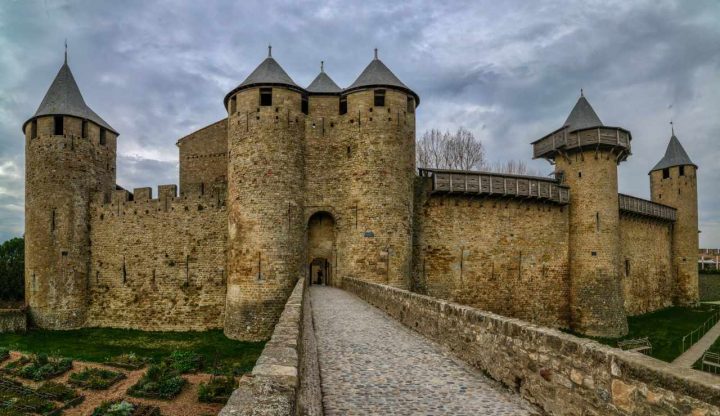
Historic Fortified City of Carcassonne, Unesco France by Jorge Láscar
- Historic Fortified City of Carcassonne, Unesco France 1 by Jorge Láscar / Flickr
- Historic Fortified City of Carcassonne, Unesco France 2 by jolimaison / Pixabay
- Historic Fortified City of Carcassonne, Unesco France 3 by Chbec / Pixabay
- Historic Fortified City of Carcassonne, Unesco France 4 by jackmac34 / Pixabay
23. Historic Site of Lyons
Lyon is the capital of the French region Rhône-Alpes and an important industrial center, whose name is mainly associated with the production of giant airbuses.
Thanks to its ideal location it is also an important transport hub and crossroads. Nevertheless, Lyon offers its visitors an incredible number of unique sights that attract tourists from all over the world.
Date of Inscription: 1998
http://whc.unesco.org/en/list/872

Historic Site of Lyons, Unesco France by Pedro Szekely
- Historic Site of Lyons, Unesco France 1 by Ludo-Photos / Pixabay
- Historic Site of Lyons, Unesco France 2 by jpnanterre / Pixabay
- Historic Site of Lyons, Unesco France 3 by reginasphotos / Pixabay
- Historic Site of Lyons, Unesco France 4 by Pauline_17 / Pixabay
24. Routes of Santiago de Compostela in France
Faithful pilgrims or tourists take a trip to the tomb of St. James the Elder in Santiago de Compostela, Spain. This pilgrimage has been developing since the 9th century and has established itself as one of the most important.
Of course, the point is to get to the Spanish shrine, but it is also important that the four historic routes pass largely on French territory. These pilgrimage routes, which are on the UNESCO World Heritage List are important for their spiritual significance and exceptional cultural heritage.
Many church buildings on these routes have been inscribed on the UNESCO World Heritage List since 1998.
Date of Inscription: 1998
http://whc.unesco.org/en/list/868
- Routes of Santiago de Compostela in France, Unesco France 1 by gavilla / Pixabay
- Routes of Santiago de Compostela in France, Unesco France 2 by Fonmiguel / Pixabay
- Routes of Santiago de Compostela in France, Unesco France 3 by lailabrocker0 / Pixabay
- Routes of Santiago de Compostela in France, Unesco France 4 by javierAlamo / Pixabay
25. Belfries of Belgium and France
Twenty-three medieval bell towers in France and additional 32 in Belgium have been on the UNESCO World Heritage List since 1999 and 2005. They can be found in the northern part of the country.
Find them here on the map:
Date of Inscription: 1999, 2005
http://whc.unesco.org/en/list/943
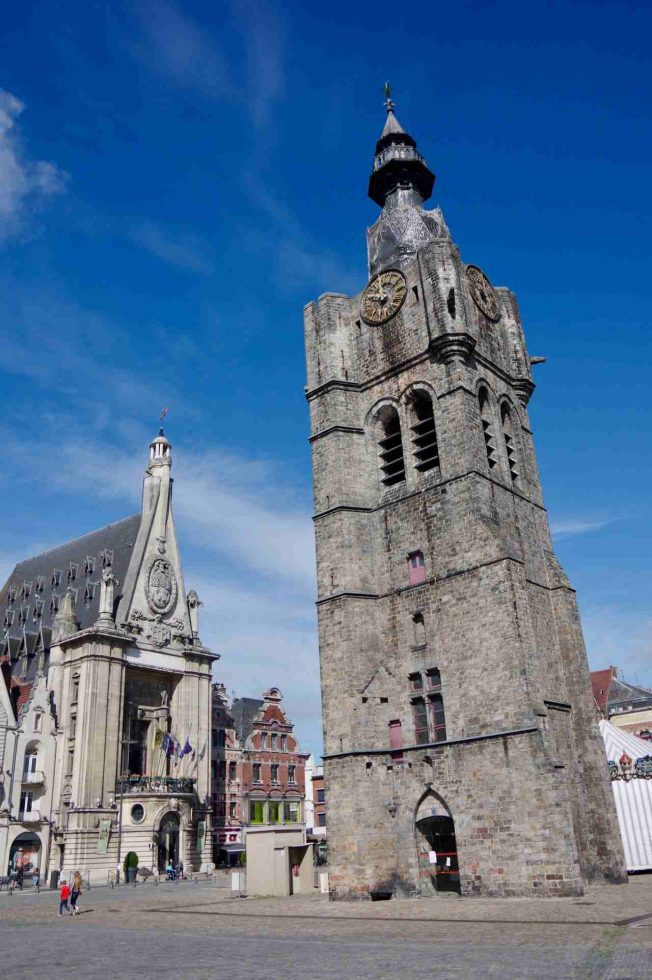
Belfries of Belgium and France, Béthune, Pas-de-Calais, Unesco France by David Merrett
- Belfries of Belgium and France, Béthune, Pas-de-Calais, Unesco France 1 by Jamain / Wikimedia Commons
- Belfries of Belgium and France, Béthune, Pas-de-Calais, Unesco France 2 by Marc Ryckaert (MJJR) / Wikimedia Commons
- Belfries of Belgium and France, Béthune, Pas-de-Calais, Unesco France 3 by Jean-Pol GRANDMONT / Wikipedia
- Belfries of Belgium and France, Béthune, Pas-de-Calais, Unesco France 4 by Velvet / Wikipedia
26. Jurisdiction of Saint-Emilion
Saint Emilion, a UNESCO World Heritage Site, is a world-famous village and wine region in France near Bordeaux. It is located in the Aquitaine region in the department of Gironde. Saint Emilion is full of sights worth visiting.
The collegiate church, the ‘Couvent des Cordelliers’ monastery, the Donjon ‘Castel Daou Rey’, the underground pottery museum and the wine cellars just to mention few of them.
Date of Inscription: 1999
http://whc.unesco.org/en/list/932
- Jurisdiction of Saint-Emilion, Béthune, Pas-de-Calais, Unesco France 1 by JEAN ROBERT THIBAULT / Flickr
- Jurisdiction of Saint-Emilion, Béthune, Pas-de-Calais, Unesco France 2 by Lynn Rainard / Flickr
- Jurisdiction of Saint-Emilion, Béthune, Pas-de-Calais, Unesco France 3 by Lynn Rainard / Flickr
- Jurisdiction of Saint-Emilion, Béthune, Pas-de-Calais, Unesco France 4 by www.twin-loc.fr / Flickr
27. The Loire Valley between Sully-sur-Loire and Chalonnes
Pays de la Loire is, as the name suggests, located in the Loire Valley, specifically in its western part. It lies in the heart of France, and is popular with tourists because of its photogenic nature.
Green countryside, several hundred kilometers long coast of the Atlantic, hundreds of kilometers of navigable waterways, mild climate, flat lands dotted with romantic castles. Loire valley is ideal area for cycling, hiking and of course water sports.
Date of Inscription: 2000
http://whc.unesco.org/en/list/933
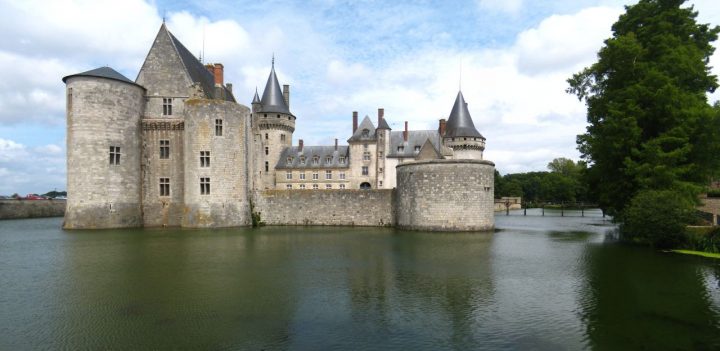
The Loire Valley between Sully-sur-Loire and Chalonnes, Unesco France by Brian Burger
- The Loire Valley between Sully-sur-Loire and Chalonnes, Unesco France 1 by JonathanRieder / Pixabay
- The Loire Valley between Sully-sur-Loire and Chalonnes, Unesco France 2 by Patrick / Flickr
- The Loire Valley between Sully-sur-Loire and Chalonnes, Unesco France 3 by Patrick / Flickr
- The Loire Valley between Sully-sur-Loire and Chalonnes, Unesco France 4 by Daniel Jolivet / Flickr
28. Provins, Town of Medieval Fairs
Known as the medieval market town, Provins is located in the middle of France in the Île-de-France region, about 90 km southeast of Paris.
It has retained its medieval character to this day, especially in the so-called Upper Town with still intact walls.
Date of Inscription: 2001
http://whc.unesco.org/en/list/873
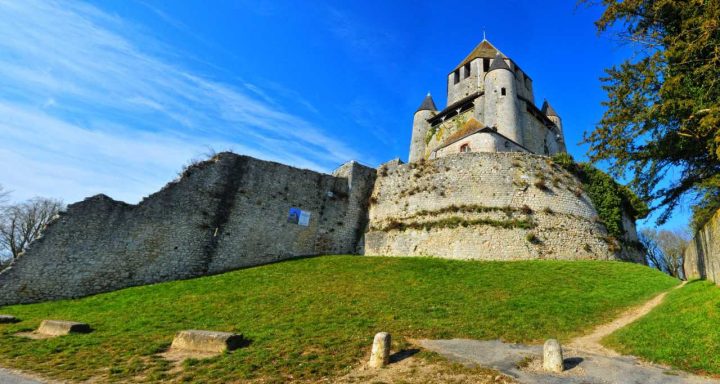
Provins, Town of Medieval Fairs, Unesco France by lwtt93
- Provins, Town of Medieval Fairs, Unesco France 1 by Patrick / Flickr
- Provins, Town of Medieval Fairs, Unesco France 2 by Patrick / Flickr
- Provins, Town of Medieval Fairs, Unesco France 3 by Patrick / Flickr
- Provins, Town of Medieval Fairs, Unesco France 4 by Tiomax80 / Flickr
29. Le Havre, the city rebuilt by Auguste Perret
At the mouth of the River Seine lies Le Havre, which is today one of the most important French ports. Its reconstruction after World War II transformed this place into a modern city with avant-garde architecture.
Le Havre’s museums and monuments testify to its rich past.
Date of Inscription: 2005
http://whc.unesco.org/en/list/1181
- Le Havre, the city rebuilt by Auguste Perret, Unesco France 1 by ddzphoto / Pixabay
- Le Havre, the city rebuilt by Auguste Perret, Unesco France 2 by dassel / Pixabay
- Le Havre, the city rebuilt by Auguste Perret, Unesco France 3 by ddzphoto / Pixabay
- Le Havre, the city rebuilt by Auguste Perret, Unesco France 4 by Julien Chatelain / Flickr
30. Bordeaux, Port of the Moon
Bordeaux is definitely one of the largest historical jewels not only in Aquitaine but in the whole of France. It is also included in the UNESCO World Heritage List. In addition, the world’s finest wines come from here.
Bordeaux is situated on the Garonne River and its origin dates back to old history (estimated to be 1 BC).
Date of Inscription: 2007
http://whc.unesco.org/en/list/1256
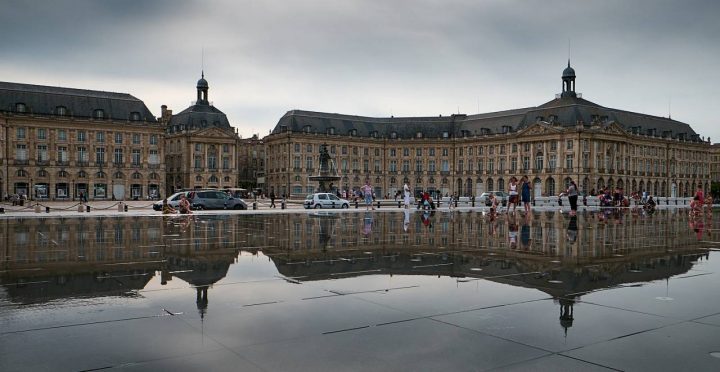
Plaza de la Bolsa,Bordeaux, Port of the Moon, Unesco France by Angel de los Rios
- Bordeaux, Port of the Moon, Unesco France 1 by Valcarmi / Pixabay
- Bordeaux, Port of the Moon, Unesco France 2 by Lgraniczny / Pixabay
- Bordeaux, Port of the Moon, Unesco France 3 by Xiquinho Silva / Flickr
- Bordeaux, Port of the Moon, Unesco France 4 by Xiquinho Silva / Flickr
31. Pyrénées – Mont Perdu
Mont Perdu is a real treasure of the Pyrenees mountains. The landscape around the Pyrenees peak of Mont Perdu is straddled between France and Spain.
It offers breathtaking views of Europe’s deepest canyons, alpine valleys, and glacial lakes, and is a unique ‘living museum’ of traditional herdsmen.
Date of Inscription: 2007
http://whc.unesco.org/en/list/773
- Pyrénées – Mont Perdu, Unesco France 1 by ericse / Flickr
- Pyrénées – Mont Perdu, Unesco France 2 by Moahim / Wikimedia Commons
- Pyrénées – Mont Perdu, Unesco France 3 by Andrzej Zawislak / Wikimedia Commons
- Pyrénées – Mont Perdu, Unesco France 4 by Moahim / Wikimedia Commons
32. Lagoons of New Caledonia: Reef Diversity and Associated Ecosystems
New Caledonia is a tropical paradise on the other side of the world. Do you like exoticism? Are you attracted by the idea of a holiday in a tropical paradise with palm trees, white sand on the beaches and beautiful corals? So New Caledonia is the right choice for you.
You may be opening the atlas now, looking for where New Caledonia is. Check the South Pacific, east of Australia and northwest of New Zealand. There are several islands such as Ile des Pins, Loyauté or the Chesterfield Islands.
Caledonia is a French overseas territory. One of the main reasons why Caledonia is definitely worth a visit is the coral barrier that borders the archipelago. In 2008, it was included in the UNESCO list. The New Caledonia Coral Reef is the second largest in the world after the Great Coral Barrier near Australia.
Date of Inscription: 2008
http://whc.unesco.org/en/list/1115
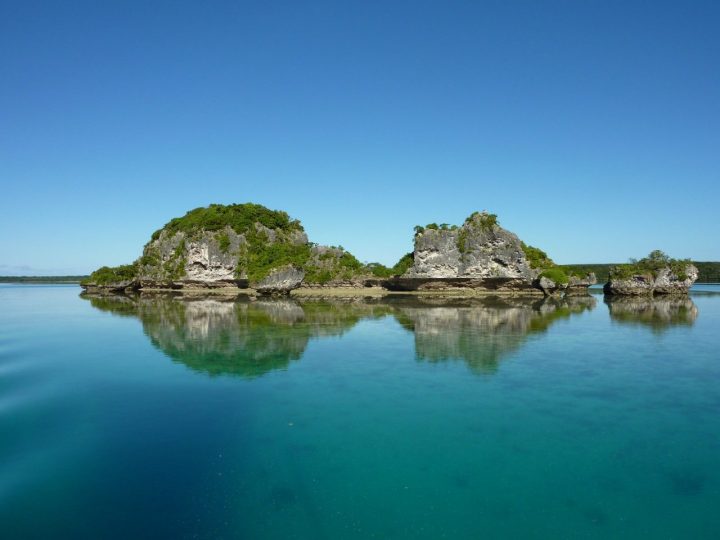
Lagoons of New Caledonia, Reef Diversity and Associated Ecosystems, Unesco France by my LifeShow
- Lagoons of New Caledonia, Reef Diversity and Associated Ecosystems, Unesco France 1 by veronoumea / Pixabay
- Lagoons of New Caledonia, Reef Diversity and Associated Ecosystems, Unesco France 2 by Florent_FSC / Pixabay
- Lagoons of New Caledonia, Reef Diversity and Associated Ecosystems, Unesco France 3 by xiSerge / Pixabay
- Lagoons of New Caledonia, Reef Diversity and Associated Ecosystems, Unesco France 4 by Taryn / Flickr
33. Fortifications of Vauban
Vauban’s fortifications are a set of the most important fortifications of the French builder Sébastien Le Prestre de Vauban (1633-1707), which was included in the UNESCO World Heritage List in 2008.
These 12 fortifications are spread along the French borders.
Date of Inscription: 2008
http://whc.unesco.org/en/list/1283
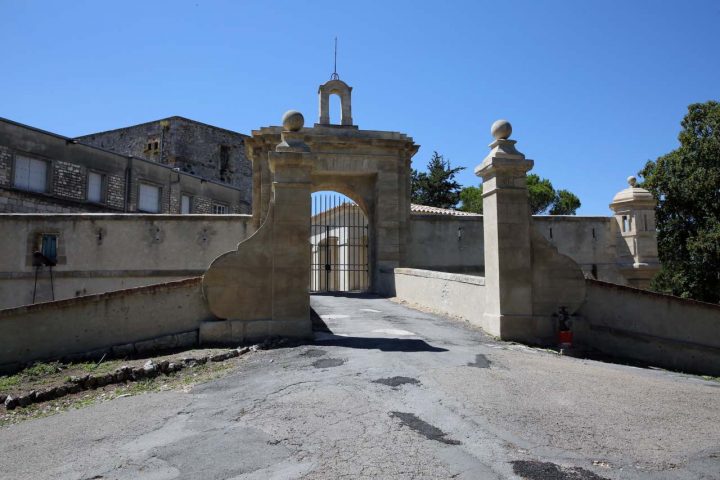
Fortifications of Vauban, Unesco France by Isabelle Blanchemain
- Citadel of Besancon, Fortifications of Vauban, Unesco France by Patrick / Flickr
- Place forte, Mont-Dauphin, Fortifications of Vauban, Unesco France by Pernmith / Flickr
- Ville neuve, Longwy, Fortifications of Vauban, Unesco France by HENRION ALAIN / Flickr
- Ville neuve, Neuf-Brisach, Fortifications of Vauban, Unesco France by Uwe Brodrecht / Flickr
34. Episcopal City of Albi
An hour’s journey northeast of Toulouse, one can find the city of Albi. Its historic center became a UNESCO World Heritage Site back in 2010.
The mighty construction of a medieval fortress dominates the hilltop above the Tarn river. The enlightened visitor, however, already knows that it is not a fortress, but the Cathedral of Sainte Cécile. Adjacent to it is the Episcopal Palace, which looks as impregnable as the Cathedral.
Date of Inscription: 2010
http://whc.unesco.org/en/list/1337
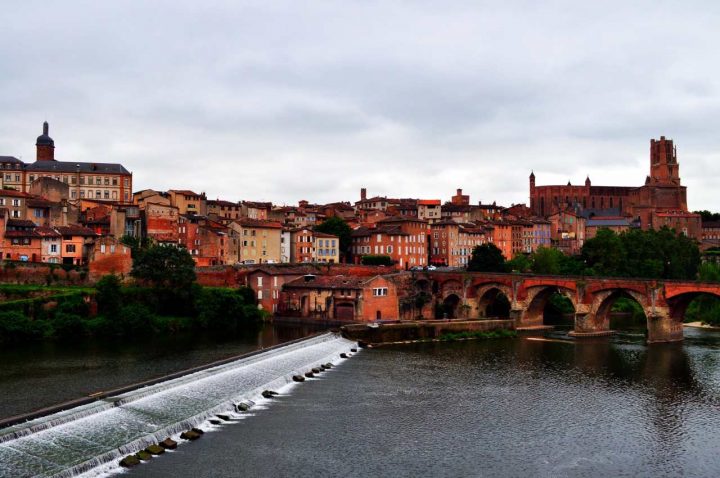
Episcopal City of Albi, Unesco France by Troy
- Episcopal City of Albi, Unesco France 1 by lecreusois / Pixabay
- Episcopal City of Albi, Unesco France 2 by Harmish Khambhaita / Flickr
- Episcopal City of Albi, Unesco France 3 by Marco 44 / Flickr
- Episcopal City of Albi, Unesco France 4 by Dan / Flickr
35. Pitons, cirques and remparts of Reunion Island
Mountainous landscape with cliffs and gorges. There are many endemic species of fauna and flora in the rainforest. Reunion Island is actually a huge active volcano, the vast majority of which lie hidden under the sea.
The tropical island near Madagascar has become one of the most interesting active holiday destinations. It offers breathtaking mountain scenery and tropical nature.
Date of Inscription: 2010
http://whc.unesco.org/en/list/1317
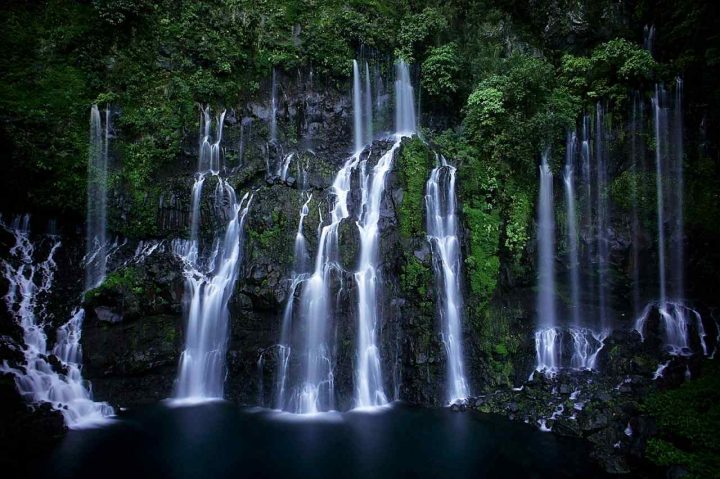
Pitons, cirques and remparts of Reunion Island, Unesco France by Miwok
- Pitons, cirques and remparts of Reunion Island, Unesco France 1 by Miwok / Flickr
- Pitons, cirques and remparts of Reunion Island, Unesco France 2 by Miwok / Flickr
- Pitons, cirques and remparts of Reunion Island, Unesco France 3 by Jean-Marc Astesana / Flickr
- Pitons, cirques and remparts of Reunion Island, Unesco France 4 by Miwok / Flickr
36. Prehistoric Pile dwellings around the Alps
Prehistoric Pile dwellings from 5000 to 500 BC were created in the Alps near lakes, rivers or wetlands. There are 111 places included on the UNESCO list that can be found in several European countries, such as Austria, France, Germany, Italy, Slovenia, Switzerland.
In France it includes following locations:
- Lac de Chalain
- Le Grand Lac de Clairvaux
- Lac d’Aiguebelette
- Baie de Grésine
- Baie de Châtillon
- Hautecombe
- Littoral de Tresserve
- Littoral de Chens-sur-Léman
- Secteur de Mongets
- Les Marais de Saint-Jorioz
- Le Crêt de Chatillon
Date of Inscription: 2011
http://whc.unesco.org/en/list/1363

Prehistoric Pile dwellings around the Alps, Unesco France by Rufus46 [CC BY-SA 3.0], via Wikimedia Commons
- Prehistoric Pile dwellings around the Alps, Unesco France 1 by Polybert49 / Flickr
- Prehistoric Pile dwellings around the Alps, Unesco France 2 by Polybert49 / Flickr
- Prehistoric Pile dwellings around the Alps, Unesco France 3 by Polybert49 / Flickr
- Prehistoric Pile dwellings around the Alps, Unesco France 4 by Polybert49 / Flickr
37. The Causses and the Cévennes, Mediterranean agro-pastoral Cultural Landscape
The agri-grazing cultural landscape covering an area of more than 300 ha in the south of France is one of the last areas where pasturage are still made in the same way since the 11th century.
This is why the whole area has been inscribed on the UNESCO World Heritage Site list back in 2011.
Date of Inscription: 2011
http://whc.unesco.org/en/list/1153
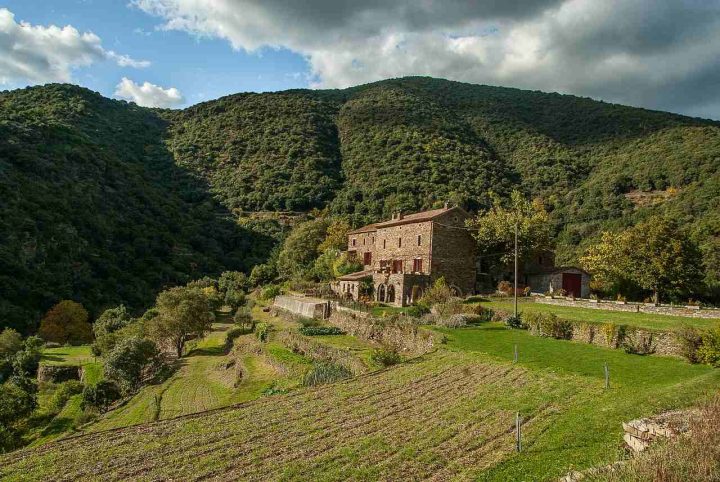
The Causses and the Cévennes, Mediterranean agro-pastoral Cultural Landscape, Unesco France by jackmac34 / pixabay
- The Causses and the Cévennes, Mediterranean agro-pastoral Cultural Landscape, Unesco France 1 by Henri MOREAU / Wikimedia Commons
- The Causses and the Cévennes, Mediterranean agro-pastoral Cultural Landscape, Unesco France 2 by HPB48150 / Wikimedia Commons
- The Causses and the Cévennes, Mediterranean agro-pastoral Cultural Landscape, Unesco France 3 by jackmac34 / Pixabay
- The Causses and the Cévennes, Mediterranean agro-pastoral Cultural Landscape, Unesco France 4 by Évimage.off / Flickr
38. Nord-Pas de Calais Mining Basin
Nord-Pas de Calais Mining Basin is a remarkable cultural landscape that has been shaped by coal mining for 300 years. There are 109 places that were inscribed on the UNESCO World Heritage list.
I don’t think we are going to mention all of them here 🙂 Maybe you should just check the link below to the UNESCO official website.
Date of Inscription: 2012
http://whc.unesco.org/en/list/1360

Nord-Pas de Calais Mining Basin, Unesco France by Jérémy-Günther-Heinz Jähnick, historien, dans le cadre de son inventaire photographique du bassin minier du Nord-Pas-de-Calais de 2011 à 2013 / Marles-les-Mines – Fosse n° 2 des mines de Marles (49) / Wikimedia Commons, via Wikimedia Commons
- Nord-Pas de Calais Mining Basin, Unesco France 1 by harry_nl / Flickr
- Nord-Pas de Calais Mining Basin, Unesco France 2 by harry_nl / Flickr
- Nord-Pas de Calais Mining Basin, Unesco France 3 by harry_nl / Flickr
- Nord-Pas de Calais Mining Basin, Unesco France 4 by harry_nl / Flickr
39. Decorated cave of Pont d’Arc, known as Grotte Chauvet-Pont d’Arc, Ardèche
Chauvet Cave, located near the village of Vallon-Pont-d´Arc in the south of France in the Ardeche region, is a UNESCO World Heritage Site and is older than the famous “prehistoric well-known gallery” Lascaux in southwestern France.
Thanks to a landslide that blocked the entrance to the cave with an area of 8.5 thousand square meters, according to experts, nobody stepped in for about 20 thousand years. In the cave, there are preserved drawings that are 36,000 years old and allegedly the oldest footprints of bare feet of homo sapiens, 20 to 30 thousand years old.
Date of Inscription: 2014
http://whc.unesco.org/en/list/1426
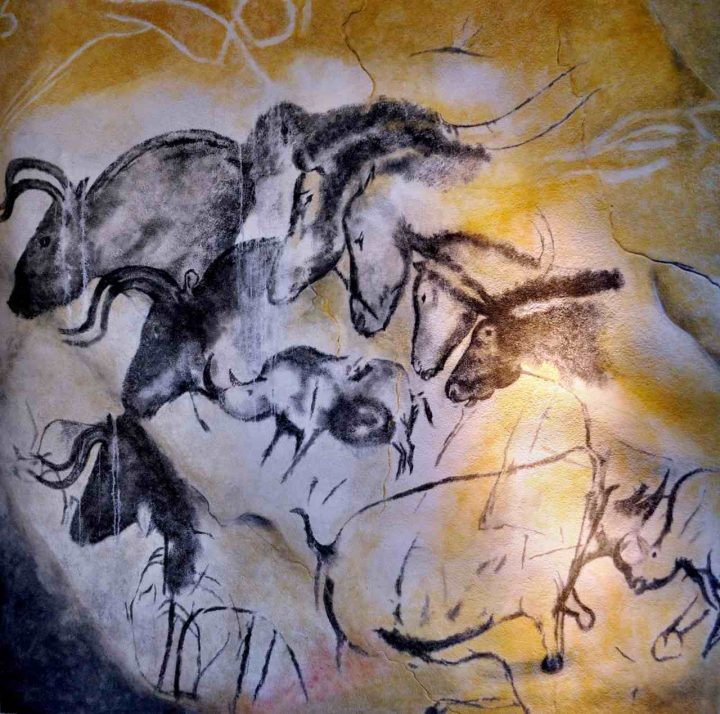
Decorated cave of Pont d’Arc, known as Grotte Chauvet-Pont d’Arc, Ardèche, Unesco France by Thomas T.
- Decorated cave of Pont d’Arc, known as Grotte Chauvet-Pont d’Arc, Ardèche, Unesco France 1 by Claude Valette / Wikimedia Commons
- Decorated cave of Pont d’Arc, known as Grotte Chauvet-Pont d’Arc, Ardèche, Unesco France 2 by Claude Valette / Wikimedia Commons
- Decorated cave of Pont d’Arc, known as Grotte Chauvet-Pont d’Arc, Ardèche, Unesco France 3 by Claude Valette / Wikimedia Commons
- Decorated cave of Pont d’Arc, known as Grotte Chauvet-Pont d’Arc, Ardèche, Unesco France 4 by Claude Valette / Wikimedia Commons
40. Champagne Hillsides, Houses and Cellars
UNESCO has recognized the wine region of Champagne as a place where, at the beginning of the 17th century, they developed a method of making champagne.
The historic vineyards and cellars of Champagne are on the UNESCO list.
Date of Inscription: 2015
http://whc.unesco.org/en/list/1465
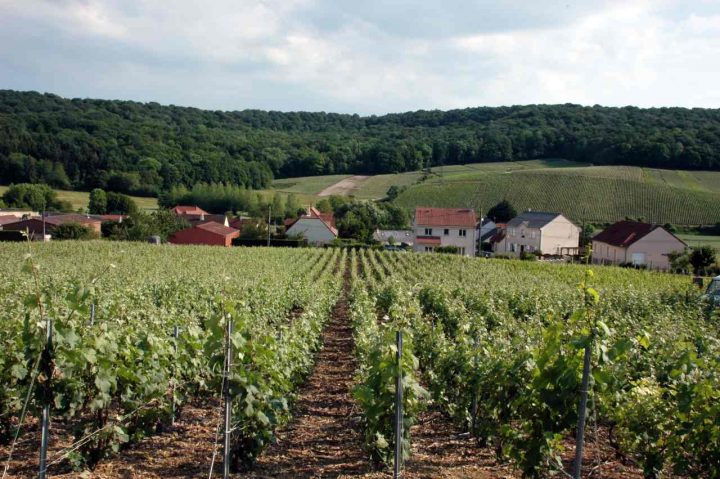
Champagne Hillsides, Houses and Cellars, Unesco France by Pug Girl
- Champagne Hillsides, Houses and Cellars, Unesco France 1 by Michal Osmenda from Brussels, Belgium / Wikimedia Commons
- Champagne Hillsides, Houses and Cellars, Unesco France 2 by Winniepix / Flickr
- Champagne Hillsides, Houses and Cellars, Unesco France 3 by Xiquinho Silva / Flickr
- Champagne Hillsides, Houses and Cellars, Unesco France 4 by ADT Marne / Wikimedia Commons
41. Climats, terroirs of Burgundy
Discover the region of gourmets and renowned wineries from the Côte d´Or region, taste the snails of Burgundy, discover the birthplace of Dijon’s famous mustard and excellent cheeses, beautiful nature and amazing UNESCO sites.
Date of Inscription: 2015
http://whc.unesco.org/en/list/1425
- Cellars (Maison Patriarche), Climats, terroirs of Burgundy, Unesco France by FranceIntense / Pixabay
- Courtyard of the Hospices de Beaune, Climats, terroirs of Burgundy, Unesco France by falco / Pixabay
- Harvest, Climats, terroirs of Burgundy, Unesco France by moniquayle / Pixabay
- Château du Clos de Vougeot, Climats, terroirs of Burgundy, Unesco France by luctheo / Pixabay
42. The Architectural Work of Le Corbusier, an Outstanding Contribution to the Modern Movement
Notre Dame du Haut is a chapel known as Ronchamp. Completed in 1954, it is considered one of the best examples of Le Corbusier’s architecture and one of the most important and successful examples of religious modern architecture of the 20th century.
It was included in the UNESCO World Heritage List back in 2016. But this is just one of the 17 sites that reflect amazing architectural work of Le Corbusier. They are spread in 7 countries throughout the world such as Argentina, Belgium, France, Germany, India, Japan, Switzerland.
Date of Inscription: 2016
http://whc.unesco.org/en/list/1321
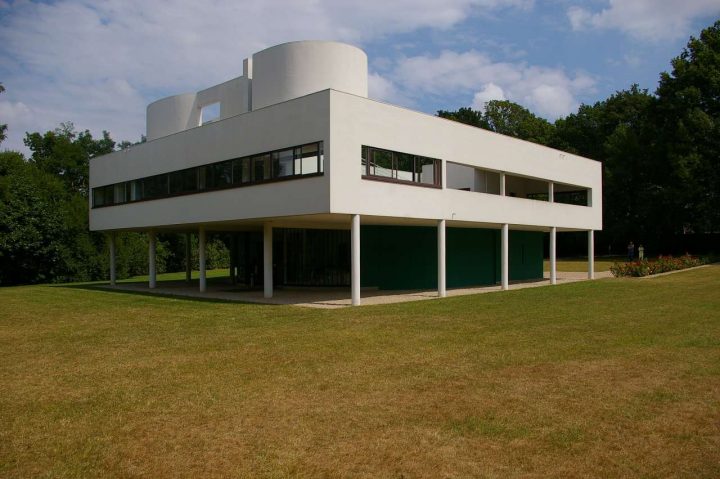
Villa Savoye, The Architectural Work of Le Corbusier, an Outstanding Contribution to the Modern Movement, Unesco France by
jelm6
- Cité Frugès de Pessac, The Architectural Work of Le Corbusier, an Outstanding Contribution to the Modern Movement, Unesco France by Fred Romero / Flickr
- Chapel of Ronchamp, The Architectural Work of Le Corbusier, an Outstanding Contribution to the Modern Movement, Unesco France by dada1020 / Pixabay
- Twin houses, Weissenhof, The Architectural Work of Le Corbusier, an Outstanding Contribution to the Modern Movement, Unesco France by Rob Deutscher / Flickr
- Villa La Roche, The Architectural Work of Le Corbusier, an Outstanding Contribution to the Modern Movement, Unesco France by Fred Romero / Flickr
43. Taputapuatea
French Polynesia is for most travellers and lovers of exotic holidays a peak on the list of the “best” places to go and visit. Just saying the names of the islands of Tahiti or Bora Bora can raise the heartbeat of many globetrotters.
Marae Taputapuatea is one of the most sacred places in all of Polynesia. Seven canoes, whose crews settled in New Zealand, sailed from here.
Date of Inscription: 2017
http://whc.unesco.org/en/list/1529

Taputapuatea, Unesco France by
Sur la route
- Taputapuatea, Unesco France 1 by Rita Willaert / Flickr
- Taputapuatea, Unesco France 2 by Rita Willaert / Flickr
- Taputapuatea, Unesco France 3 by Amanda / Flickr
- Taputapuatea, Unesco France 4 by Rita Willaert / Flickr
44. Chaine des Puys – Limagne fault tectonic arena
France is a big country and offers all types of landscapes. However, a few people know that in the French Central Mountains there is probably the most beautiful volcanic landscape of continental Europe, protected in the Auvergne Volcano Regional Nature Park.
The northernmost area is the chain of volcanoes known as Chaîne des Puys. 40 volcanic cones, 8 lava domes and 15 maars were formed here sometime between 70,000 and 8,000 years ago.
Date of Inscription: 2018
https://whc.unesco.org/en/list/1434
- Chaine des Puys – Limagne fault tectonic arena, Unesco France 1 by Patrick / Flickr
- Chaine des Puys – Limagne fault tectonic arena, Unesco France 2 by Ruben Holthuijsen / Flickr
- Chaine des Puys – Limagne fault tectonic arena, Unesco France 3 by Stephane Marechal / Flickr
- Chaine des Puys – Limagne fault tectonic arena, Unesco France 4 by Patrick / Flickr
45. French Austral Lands and Seas
The remoteness of these islands from the centres of human activity makes them well-preserved showcases of biological evolution and a unique terrain for scientific research.
The islands are situated in the Indian Ocean and include the Crozet Archipelago, the Kerguelen Islands, Saint-Paul and Amsterdam Islands and also 60 small sub-Antarctic islands.
Date of Inscription: 2019
https://whc.unesco.org/en/list/1603
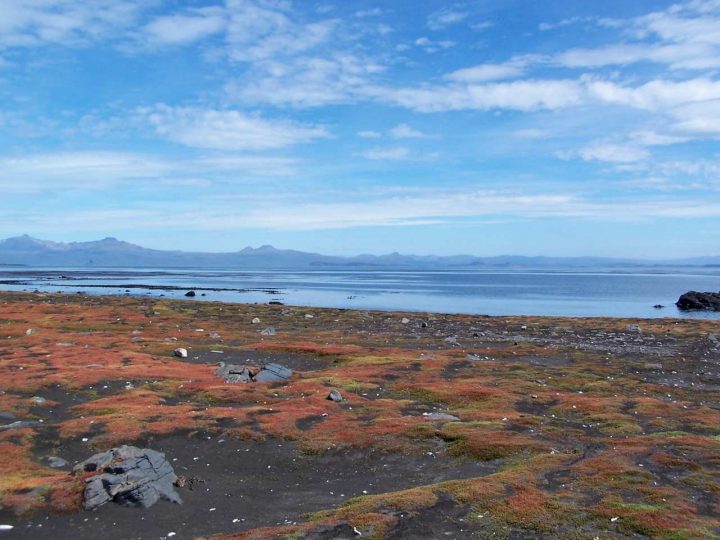
Kerguelen Islands,French Austral Lands and Seas, Unesco France by
DocAC
- Islands of the Apostles, archipelago Crozet, French Austral Lands and Seas, Unesco France by Skitterphoto / Pixabay
- Japanese Garden, Crozet Archipelago, French Austral Lands and Seas, Unesco France by The Official CTBTO Photostream / Flickr
- Saint-Paul Islands, French Austral Lands and Seas, Unesco France by NathanKoop / Pixabay
- The American Bay, Crozet archipelago, French Austral Lands and Seas, Unesco France by franek2 / Wikimedia Commons
So this was an amazing list of countless UNESCO sites in France, if you are looking for Castles in France check this article, we have listed 190 best castles to visit in France or read here about 50 most beautiful cities and towns to visit in France, they all worth a visit! For Paris we have 25 places you can’t miss on your trip to Paris and if you prefer summer holiday at the sea, what about going to one of these 15 of the Best Beaches in France?
France boasts numerous UNESCO World Heritage Sites that showcase its rich history, culture, and architectural splendor. The Palace of Versailles, with its opulent gardens and lavish interiors, is a testament to French royalty’s grandeur. Mont-Saint-Michel, a stunning island abbey, offers a unique blend of medieval architecture and natural beauty.
The historic center of Avignon, with its famous Papal Palace, takes visitors back to the days of the Avignon Papacy. The iconic Notre-Dame Cathedral in Paris and the Pont du Gard, an ancient Roman aqueduct, are among the must-visit sites that contribute to France’s cultural and historical significance.
Whether you’re an architecture enthusiast or a history buff, exploring these UNESCO sites in France promises an enriching and unforgettable travel experience.

